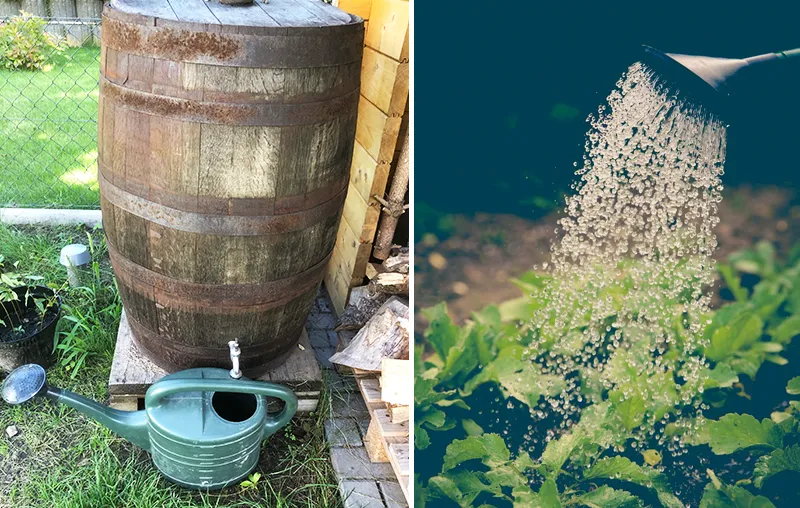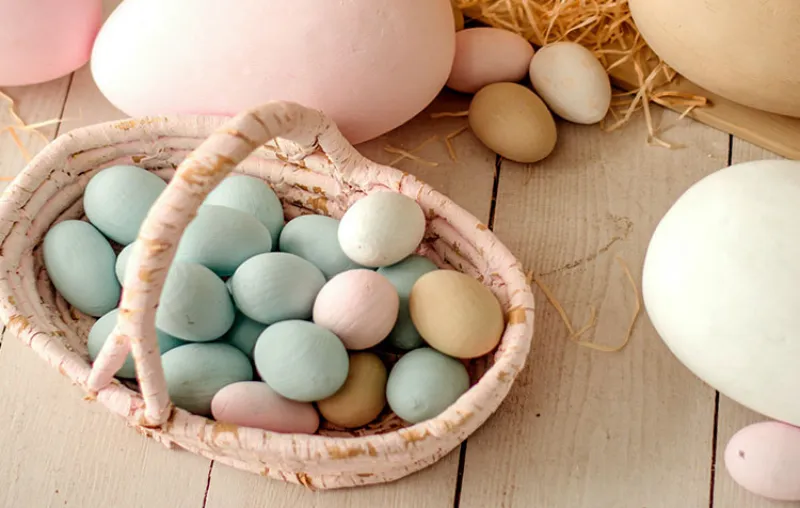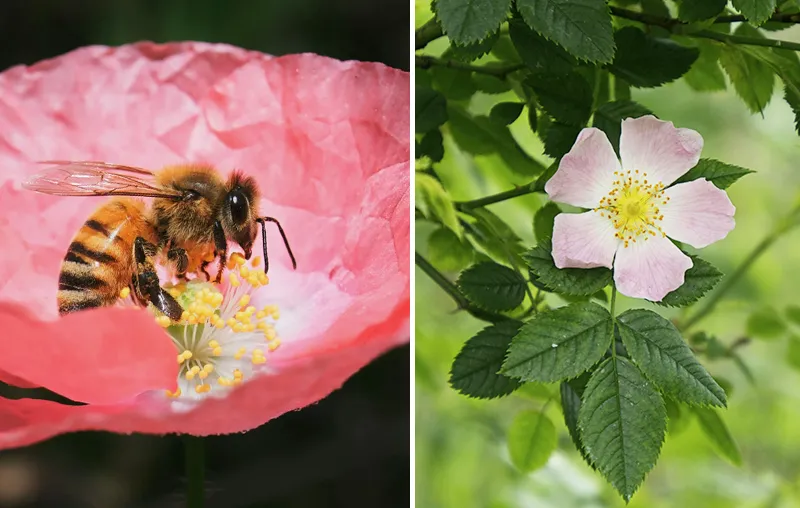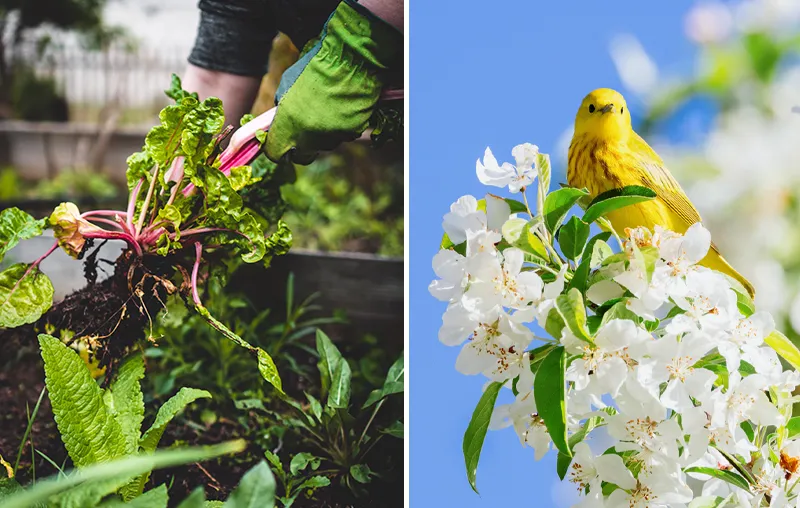How can you save water in the garden? If you're looking for tips on how to avoid watering at all, you've come to the right place! Garden and balcony plants need a lot of water, especially in the hot season. In times of increasing Water Shortage however, it is more important than ever to be more conscious of how we use the earth's most precious resource, even in our own green spaces.
Reducing water consumption during garden maintenance and watering more efficiently ultimately protects the environment and your wallet - and continues to save plants from drying out. Fortunately, there are numerous measures that you can implement directly as a hobby gardener.
In this article, I'll show you how you can save water in your garden using simple methods and still enjoy a blooming, species-rich paradise. Let's go!
Reasons: Why reduce water consumption in the garden?
I have already mentioned a few motifs. But before we move on to the specific tips, I'd like to give you all the important tips again. Advantages of a garden that hardly needs any waterclearly arranged:
- Save money - and minimize the water bill.
- Protect environment and animals - and ecosystems and natural resources protect.
- Stimulate plant growth - and promote the health of garden plants.
- Reduce workload - and the Making your garden easier to maintain.
- Acting in solidarity - and make sure that everyone has enough water.
- Making plants more resistant - and prepare them specifically for dry periods.
14 tips: How can you save water in the garden?
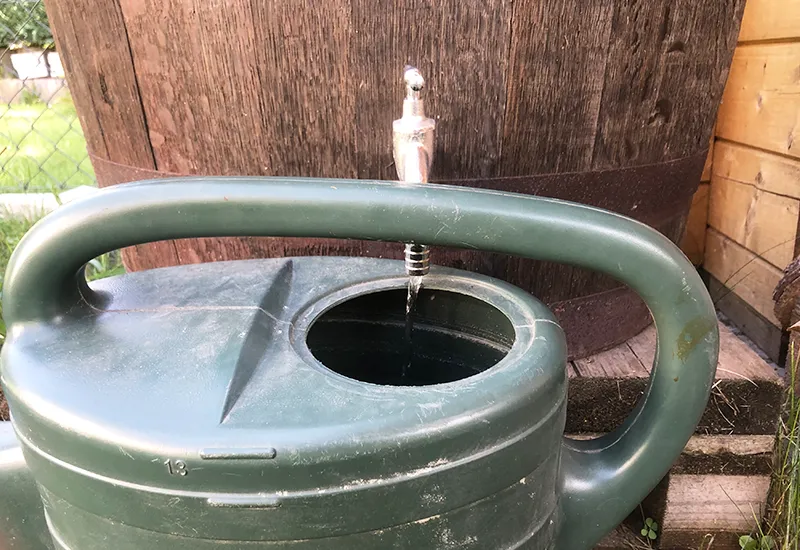
Motivated enough? Great! How can you now use and waste less water in your everyday gardening practice? You could just hope for rain... but joking aside! Of course there are also some Things you can actively do. 😉
Here I present to you my best tips, thanks to which our Garden water meter now retired is. Use it regardless of whether you are in the middle of planning your garden or simply want to save as much water as possible in your existing garden.
1. collect rainwater
I can only advise you to use rainwater with one Cistern and/or a Rain barrel to catch. Nature provides it for you free available and it is also better for the plantsthan the hard, calcareous water from the outside tap.1
Plus, you can always Use sensibly for garden irrigation if required. I use both an old, converted wine barrel and an underground cistern. They collect rainwater from the roof of the garden shed and from the house.
With a Tap on the barrel and a Connection to the cistern I can then use it sensibly without using water from the tap.
Tip: You can also use the old wine barrels converted into rain barrels. directly here at Temesso* kaufen. Funktioniert bei mir einwandfrei! Das Holz muss sich am Anfang nur einmal mit Wasser vollsaugen, dann ist das Fass dicht. 🙂
2. let the lawn grow
Most people want a lush, green and perfectly trimmed lawn. But the shorter you keep it, the sooner the roots dry out in the hot season. So you would have to use even more water to prevent your beloved lawn from burning or turning brown.
In my experience, the most water-conserving alternative is to leave the lawn itself as small as possible and they Mow much less frequently.
The long blades of grass provide the ground with shade and protect it from drying out. As a result, you also have to blast less often. In addition, more and more flowering wild herbs like dandelions and daisies on it - weeds, which in turn attract insects. look forward to.
Tip: Perhaps a dry lawn is also something for you. It may not be as lush and green, but it still grows very well even with less water and in hotter conditions.
3. install automatic drip irrigation
A drip irrigation system is an automatic irrigation system in which a drip hose is used to water the plants. slowly but steadily releases water directly to the roots of the garden plants will.
This is how no water wasted and the soil is always moist in the desired places. Once installed, you will benefit from it constantly - and will have to water your trees, shrubs and perennials manually much less often.
This set from Gardena* I can recommend to you.
4. water only in the morning and evening
If you have your own personal Water Footprint you need to water your plants in the garden at the right time. Namely under no circumstances in the burning midday sunwhere the degree of evaporation is highest and the risk of burnt leaves is very high.
It is better to water your plants in the early morning or evening. As the sun is not yet or no longer shining much more water penetrates the soil and reach the roots so that you ultimately use significantly less. Nevertheless, water your plants more frequently so that you don't have to do this as often.
5. water plants directly at the roots
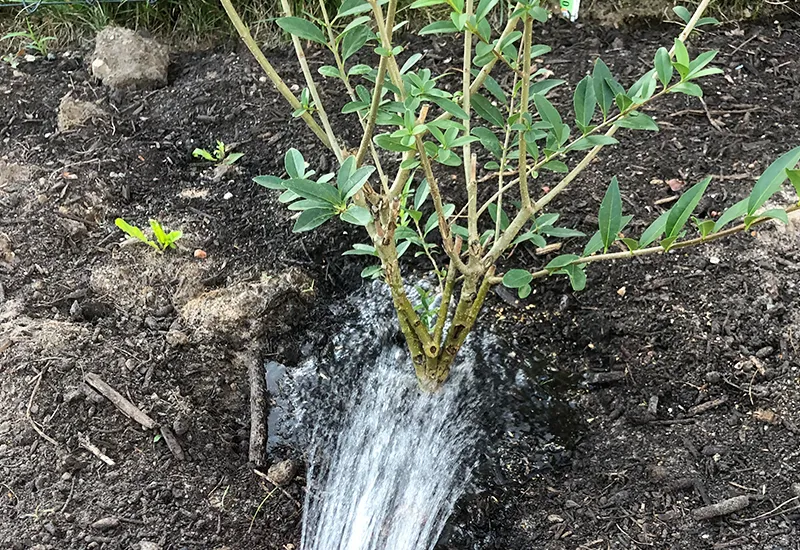
Whether with the multi-sprayer or the watering can - the with the right casting technique can be found in the sustainable garden save an extreme amount of water! Make sure that the water reaches the roots directly without watering the foliage.
It is very helpful, a small watering rim made of soil around the respective plant, in which the water then always flows automatically to the center and seeps away directly over the roots.
An additional advantage of this funnel-shaped border is that it also allows Automatically more water when it rains directly to the plants.
6. select drought-resistant plants
If you prefer a water-saving "garden without watering" and want to use the Combating water scarcity locally should consciously choose trees, shrubs, perennials and other plants, that cope well with heat and drought.
Here are a few Examples for plants (by the way, you can simply order from the Horstmann nursery*) that can survive for a long time without water:
Trees that can withstand drought:
- Whitebeam (Sorbus aria)
- Service tree (Sorbus torminalis)
- Stonecrop (Prunus mahaleb)
- …
Shrubs that can withstand drought:
- Wine-Rose (Rosa rubiginosa)
- Yellow bladder bush (Colutea arborescens)
- Sea buckthorn (Hippophae rhamnoides)
- …
Perennials, flowers or herbs that can withstand drought:
- Meadow Sage (Salvia pratensis)
- Mountain aster (Aster amellus)
- Common viper's bugloss (Echium vulgare)
- …
All these plants are native and very good for a bee- and also basically insect-friendly garden suitable.
And the list could basically go on forever. But the decisive fact here is: If you want to save water in your garden, you should opt for drought-resistant plants.
7. planting according to location
I can only generally advise you to always consider before buying new plantswhere you want to plant them. After all, you also reduce your water consumption in the garden by placing your plants in the right place.
In short: Sun-loving plants belong in sunny spots and shade-tolerant plants in the shade. In the end, they thrive better and require less water and care.
8. consciously use shade providers
About a sustainable sun protection many plants and not least your lawn will be happy. As a natural alternative for Sails and umbrellas you should therefore definitely Shady trees and large shrubs into your garden planning if you have the opportunity.
Then place the plants of your choice as follows to the sun that over the years they will protect your lawn in particular, but also many sensitive plants in your garden, from the hot rays of the sun. This is how you ensure Weaker evaporationkeep the soil moist for as long as possible and require less water in the garden.
9. observe water-retaining drainage for potted plants
You will also use less garden water if you give your potted plants on the balcony or patio a drainage layer. It can Then store water so that the plants can absorb it through their roots if necessary.
For example Expanded clay*natural pumice, clay shards or also Gravel are very suitable for keeping the soil in the plant pots moist for longer. With such water-retaining drainage, you ultimately reduce the water requirement of your plants.
10. plant ground cover
The fewer open spaces there are in your garden, the less water can evaporate.
Ground cover plants that spread out like a carpetkeep the soil moist and weeds at bay. In this way, they also make an important contribution to a garden that conserves as much water as possible.
Here I have a few Examples of drought-resistant ground cover plants (available again here at the Horstmann nursery*) for you, all of which require little water themselves:
- Oregano (Origanum vulgare)
- Sand thyme (Thymus serpyllum)
- Yellow sunflower (Helianthemum nummularium)
Good to know: At the same time, these are also very Bee-friendly ground cover. So not only are they water-friendly and beautiful, they also help to keep the Stop insect mortality.
11. cover the beds with bark mulch
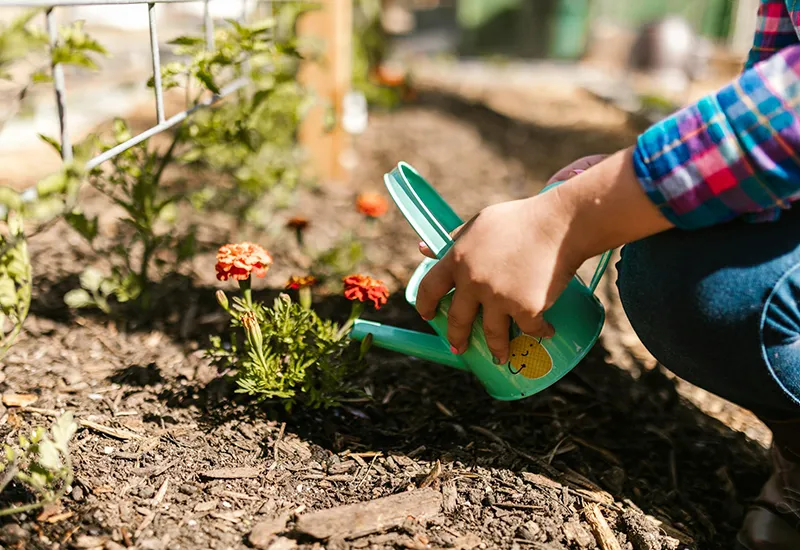
To preserve soil moisture, the following are particularly suitable Bark mulchbut also a mulch layer of Leaves, straw or chopped plant residues. Mulch stores water and protects the soil from drying out.
For example, you can mulch your wild hedges or vegetable patch to keep the further minimize the water requirements of your plants. The mulch layer also suppresses the growth of weeds, which also draw water.
12. rake open beds regularly
If you want to use less water in the garden, I have another important tip for you! If you don't have ground cover covering all areas of your beds, you should occasionally add a little water to the free corners. Dig up with rake and hoe.
In this way, you can prevent a forms a hard crust on the soil surfacewhich makes it more difficult for water to penetrate and for aeration to take place. Weeds also have less chance of spreading and claiming your water from the watering can for themselves.
The loosening of the soil means that it Absorb and store water better can. The less water you ultimately have to use until your plants get enough of it.
13. rely on humus-rich compost soil
Humus is a great water reservoir - and Compost offers ideal conditions for a humus-rich soil.
It also prevents waterlogging and promotes the health of garden plantswhich prefer a nutrient-rich soil. This means that they can ultimately survive longer without water or with slightly less water.
Tip: By the way, you can find out how to make your own fertile compost in the Article about composting.
14. create a sand and crater bed
With a layer of sand about 15 centimeters thick, you create a Nutrient-poor sand bed and literally send the perennials growing in it to a training camp, from which they come back stronger.
As the water seeps away quickly, the plants are forced to form deeper rootsThis means that they will be much deeper in the soil at their final location and require less fresh water.
A so-called crater bed also conserves water. There is a slightly raised embankment around the outside of the round bed and the depth drops further towards the center, creating a small crater. When it is warm, it is cooler inside than outsideso that ultimately the water requirement is also lower.
Saving water in the garden? No problem!
From rainwater collected and used for irrigation, to the right watering technique and drought-resistant garden plants, to water-retaining garden soil, today you have Many useful tips to save water in the garden.
Use the water-saving ideas to appreciate the source of all life on our planet even more from now on and protect it - and automatically save money in the process. Every drop counts.
"When the well is dry, we know the worth of water."
Benjamin Franklin (more at Water Quotes)
I hope you find this article a valuable source of inspiration. Do you have any questions, suggestions or other tips of your own? Then I look forward to your comment!
Stay sustainable,

PS: I've also written an article about how you can use your garden outside of the garden as well. save water at home can. So take another look there next!
References:
- Federal Environment Agency: Tips for sustainable rainwater use (as of 09.07.2024), available at https://www.umweltbundesamt.de/umwelttipps-fuer-den-alltag/garten-freizeit/regenwassernutzung. [30.07.2024]. ↩︎

